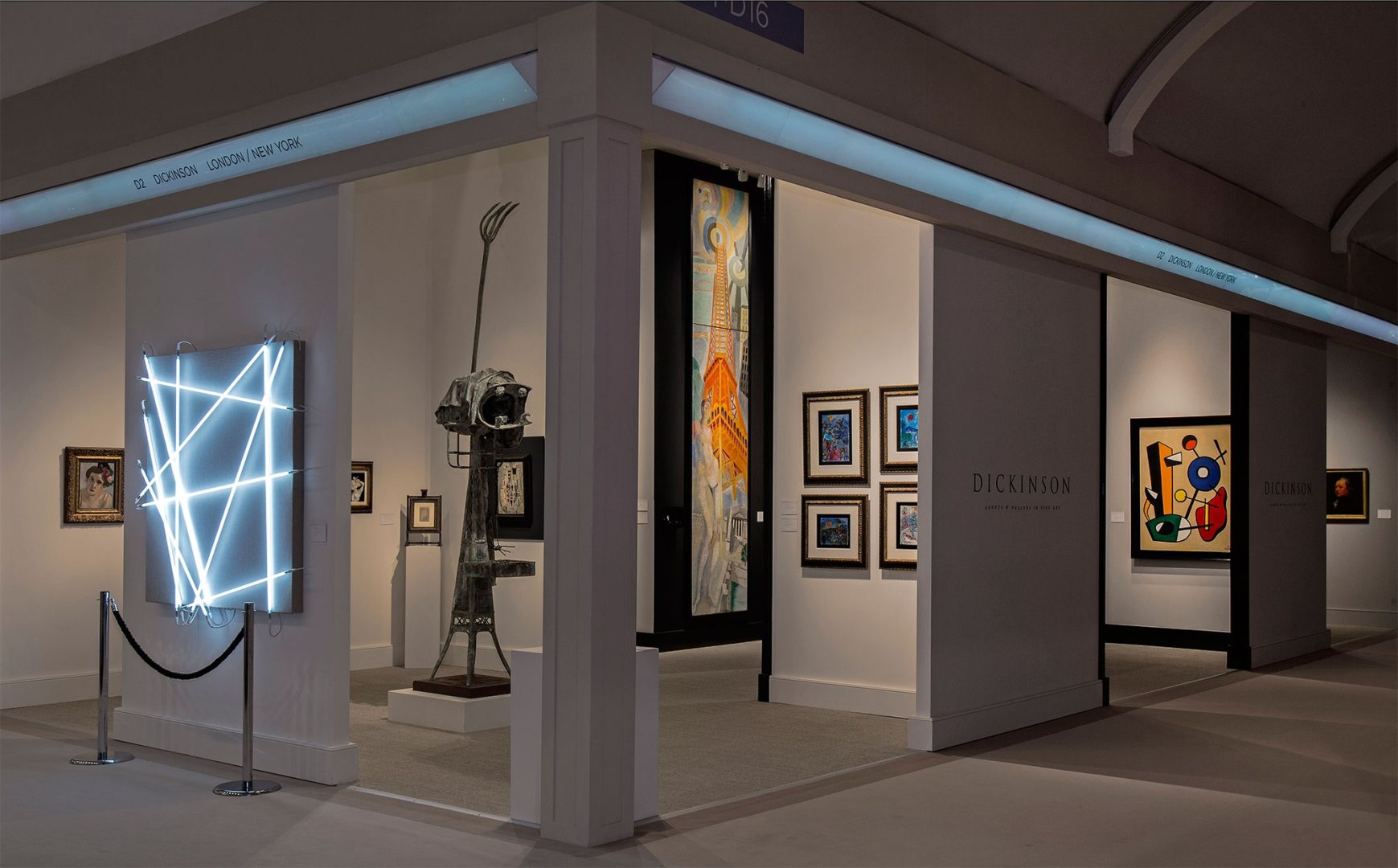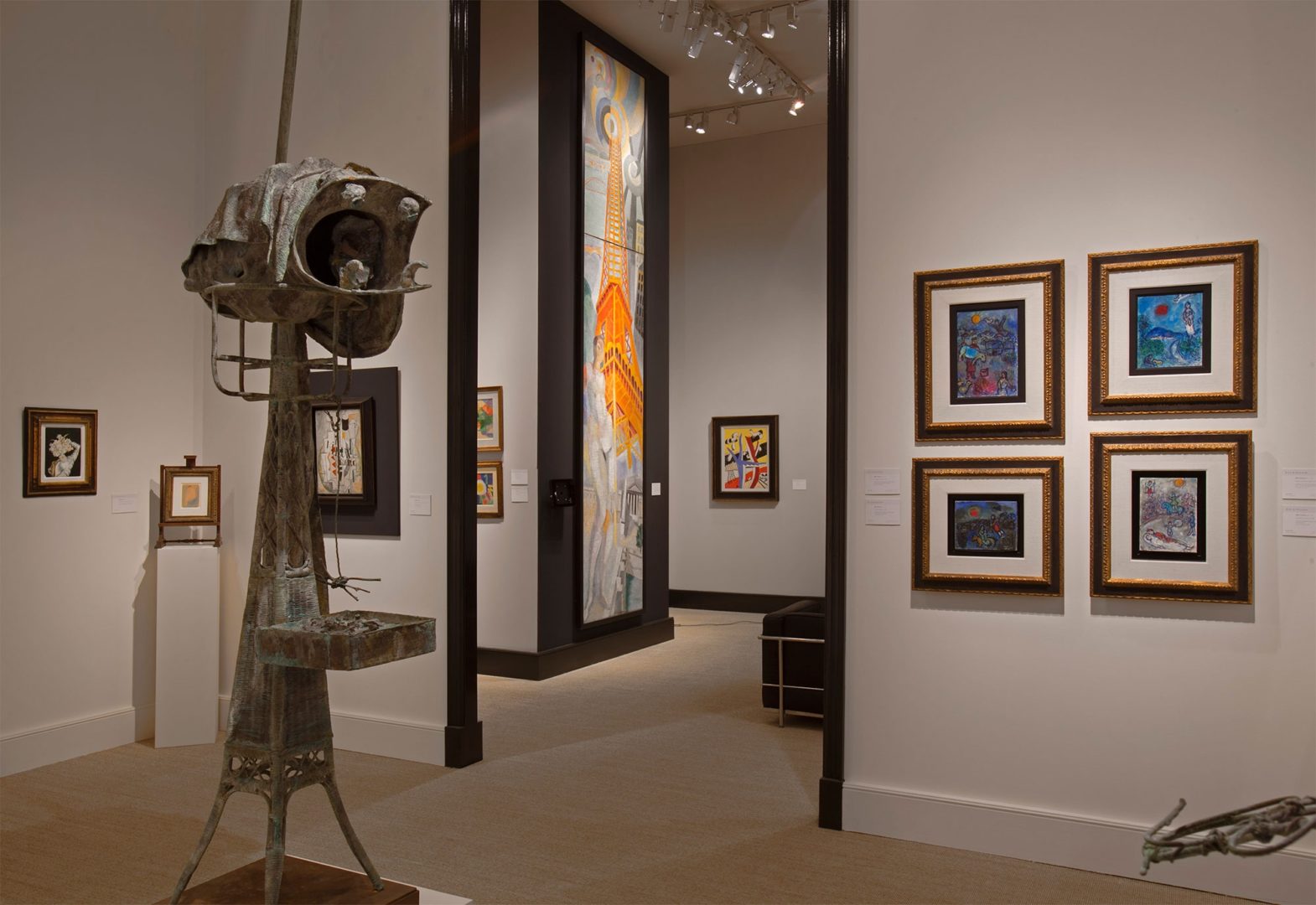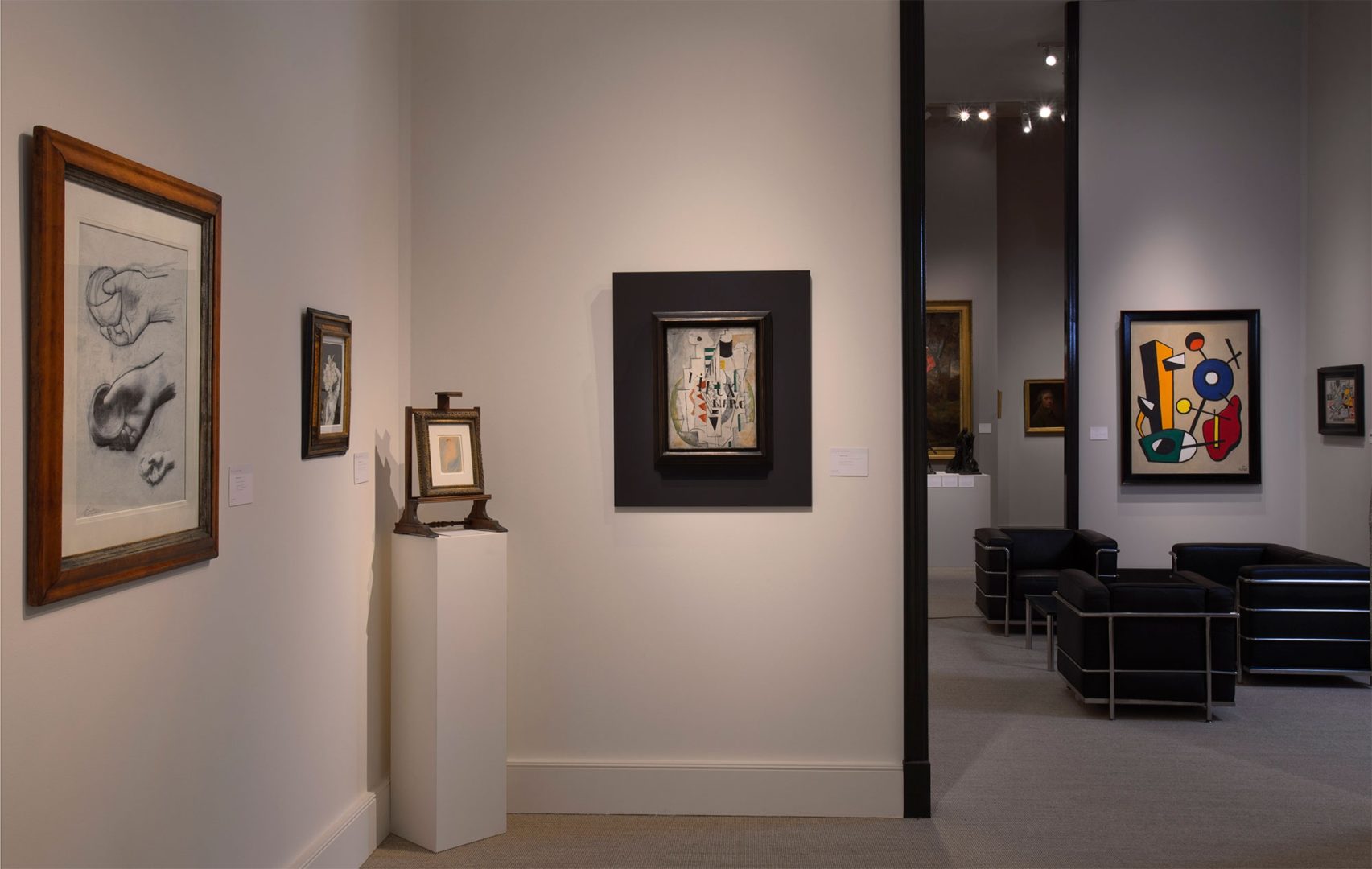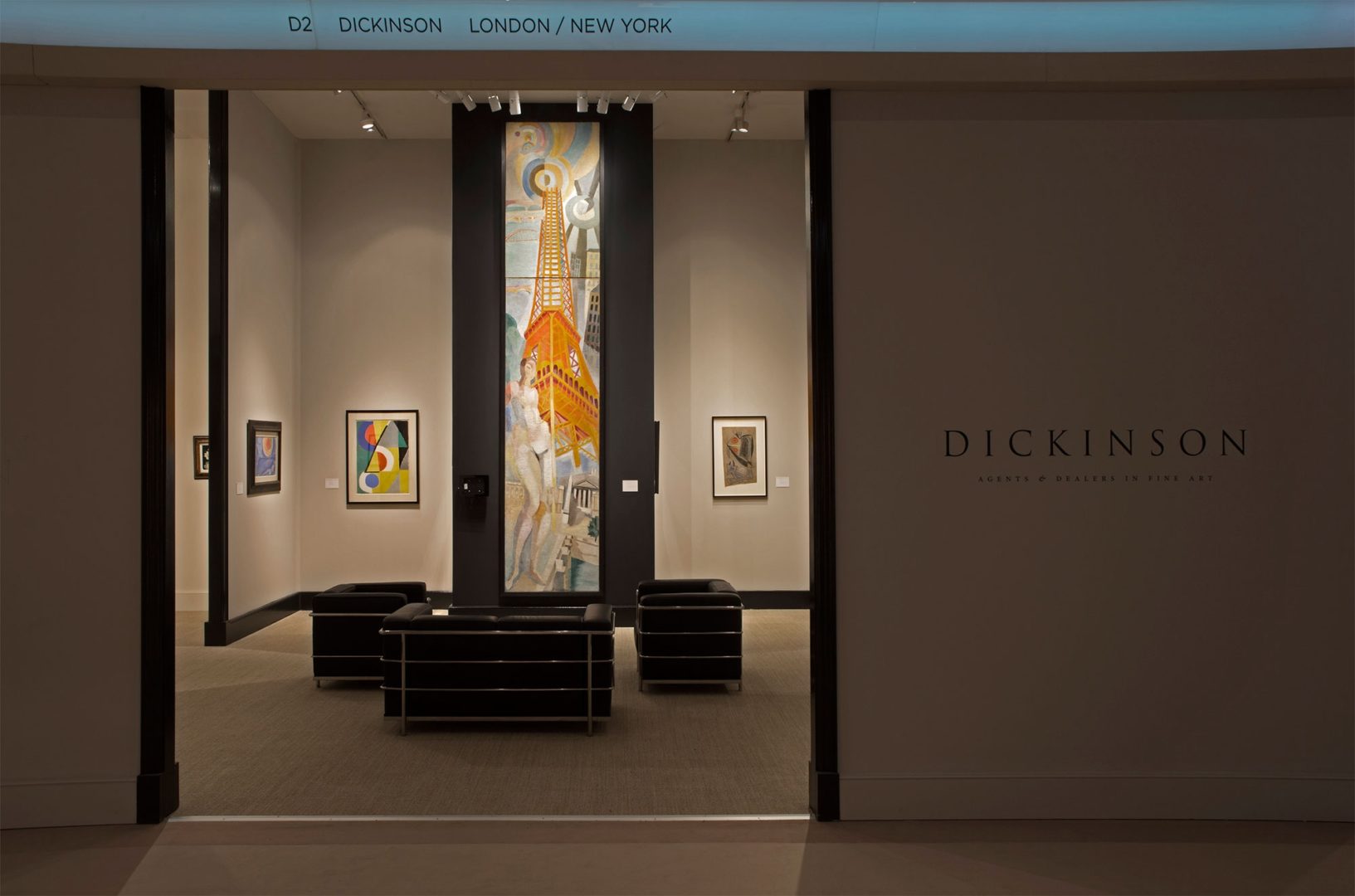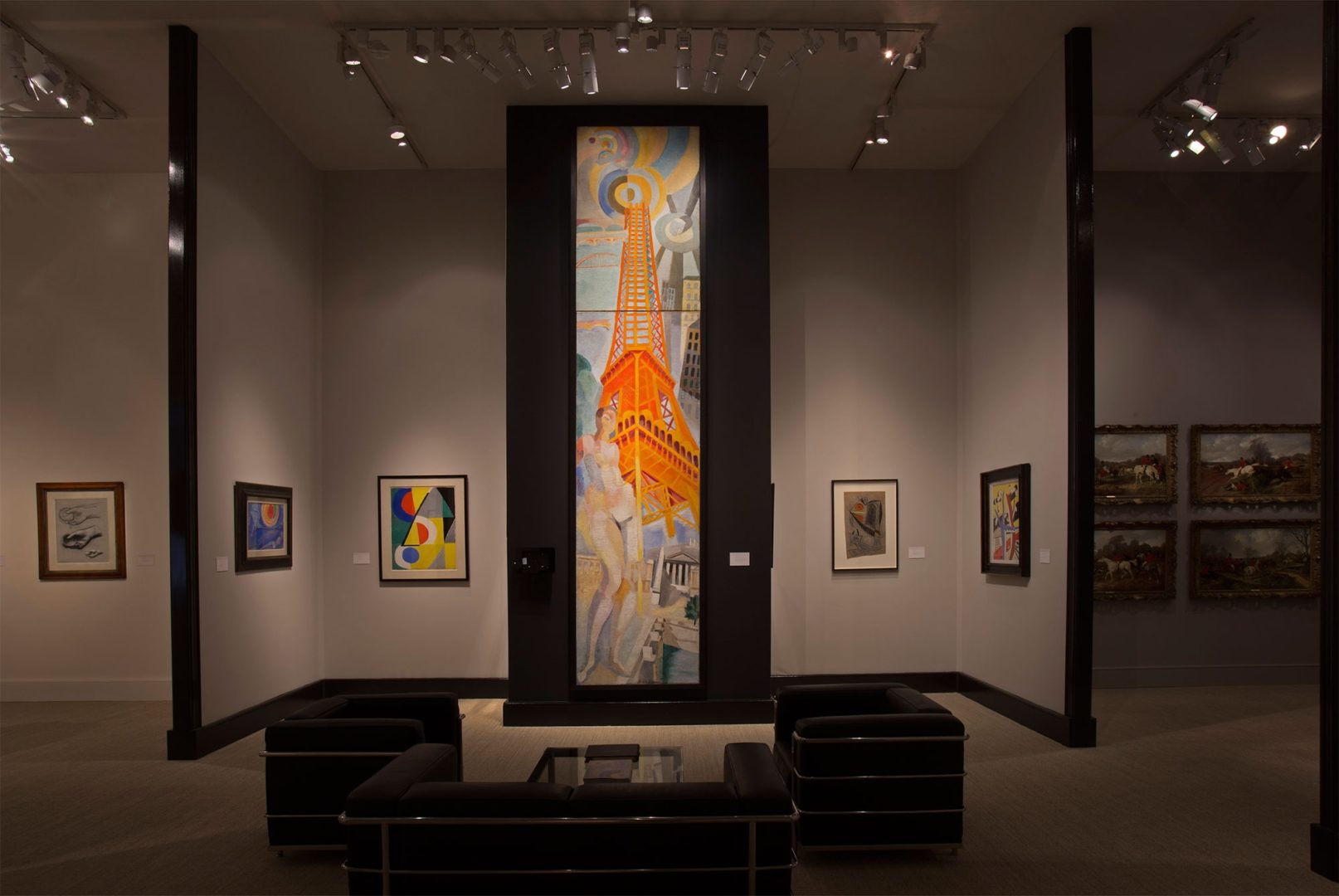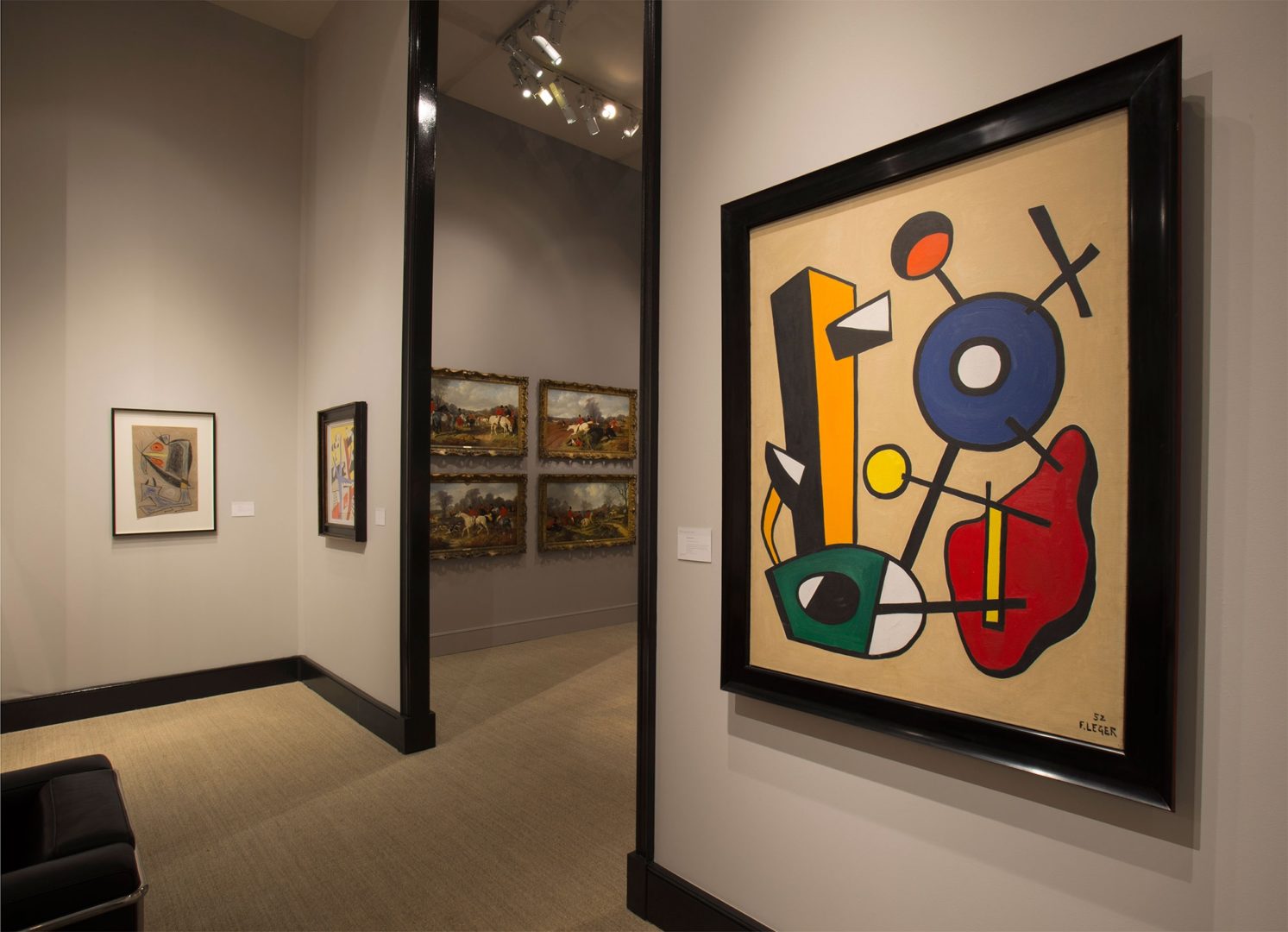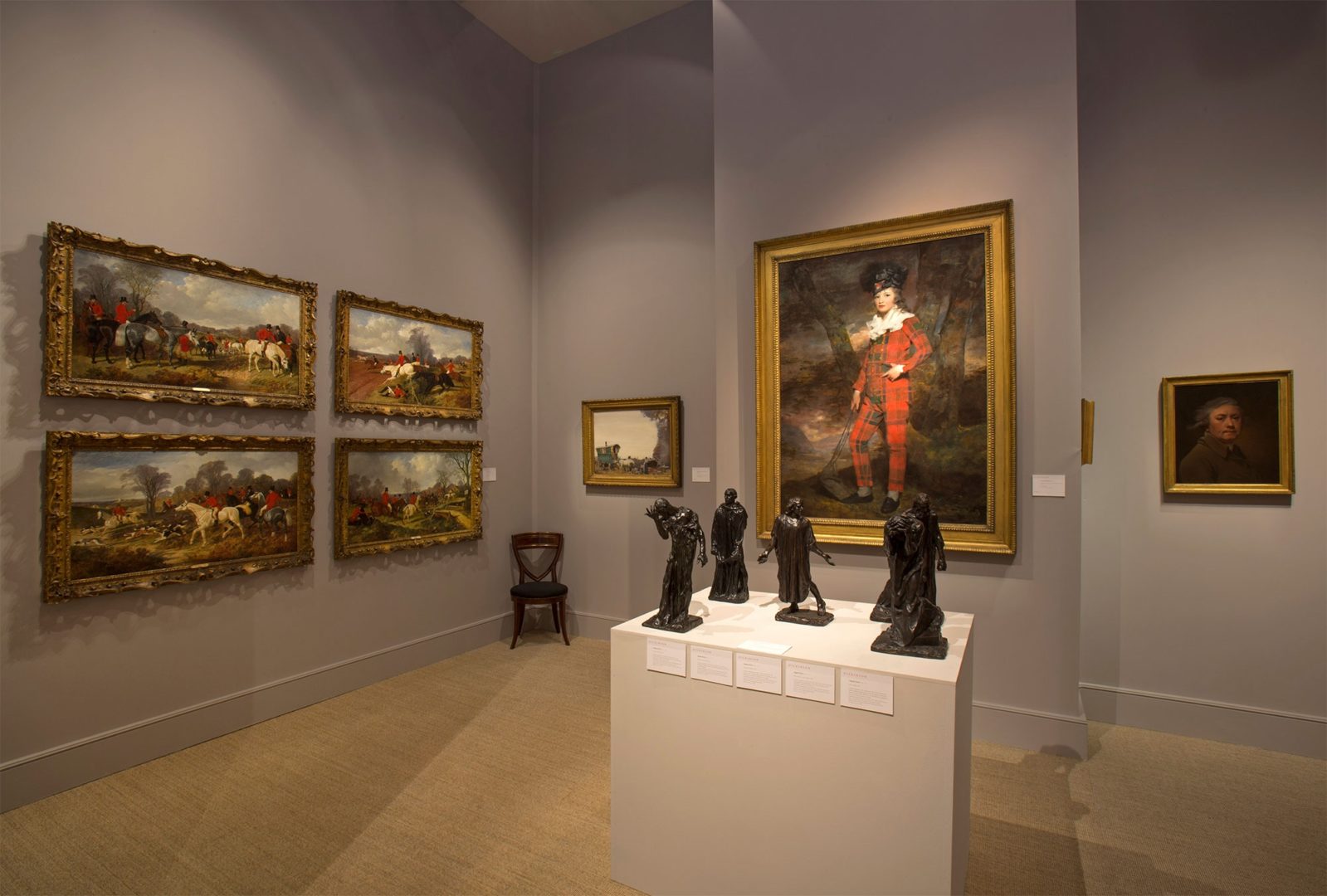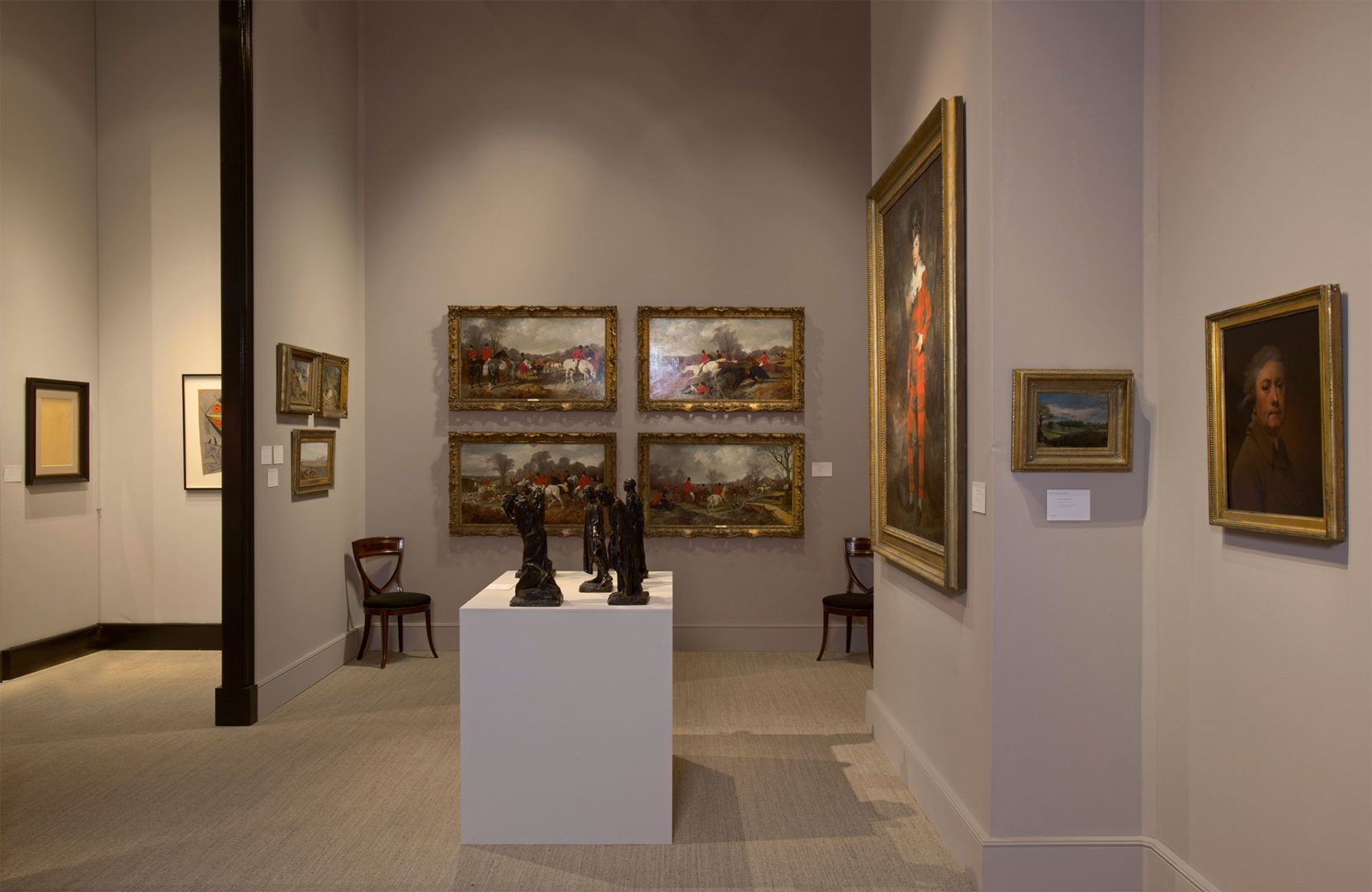DICKINSON at Masterpiece: Royal Hospital Chelsea, 25 June – 1 July 2015
Robert Delaunay’s “La Ville de Paris, La Femme et la Tour Eiffel”
La Ville de Paris, la Femme et la Tour Eiffel, a monumental Art Deco masterpiece by the Orphist painter Robert Delaunay, will be offered for sale at Masterpiece by Dickinson of London and New York. Delaunay painted La Ville de Paris, la Femme et la Tour Eiffel for the seminal 1925 Paris World’s Fair (Exposition International des Arts Décoratifs), the title of which led to the widespread adoption of the term “Art Deco”. This influential visual arts style combined traditional arts and crafts motifs with the imagery and materials of the Machine Age. A postcard issued to promote the Exposition shows Delaunay’s painting hanging on the wall. Delaunay first turned his attention to the Tour Eiffel series between 1909 and 1914, subsequently returning to the theme in the 1920s and 1930s.
One of the earliest studies of the Eiffel Tower was painted in 1909 as an engagement present for Delaunay’s wife, born Sonia Terk (1885 – 1979), and she later recalled: “It was ‘our’ picture. The Eiffel Tower and the Universe wereone and the same to [Robert].” By replacing the pastoral landscape idylls of the Impressionists with a prophetic vision of modernity, Delaunay aimed to emphasise French achievement, innovation, progress and patriotism through the iconography of the Eiffel Tower. Although its construction in the late 19th century provoked a tremendous controversy, the Tower soon became the quintessential icon of urban existence, a monumental tribute to human aspiration and architectural achievement. In addition to the Tower itself, Delaunay has included in his composition a number of identifiable Parisian landmarks and bridges, and has commemorated Charles Godefroy’s historic 1919 victory flight through the Arc de Triomphe. The low vantage point and dramatic foreshortening underscore the immense scale of the painting itself – at four and a half metres high, it is the largest and most impressive work in the Tour Eiffel series – and the surface is defined by brilliant and contrasting hues. Orphism, a movement identified in 1912 and pioneered by Delaunay and Sonia, is considered an offshoot of Cubism and relies on the sensation of pure colour as a means of both expression and structure.
This painting is made all the more desirable by its fascinating provenance, as it remained in Sonia Delaunay’s own collection until her death in 1979. A talented artist and designer in her own right, currently the subject of a major retrospective exhibition at Tate Modern, Sonia collaborated with Robert on the set and costume designs for the 1926 French movie Le P’tit Parigot (“The Small Parisian One”). La Ville de Paris, la Femme et la Tour Eiffel can be seen in the background in contemporary photographs of the set. Ninety years after Delaunay’s painting was first presented in 1925 in Paris, Dickinson is dedicating a room on its stand at Masterpiece to La Ville de Paris, la Femme et la Tour Eiffel, the Delaunays, and the legacy of Cubism. Due to this painting’s iconic subject matter, impressive scale, and historically important provenance, La Ville de Paris, la Femme et la Tour Eiffel is a highly significant example of Delaunay’s work during the height of his career, and can truly be considered a masterpiece.

